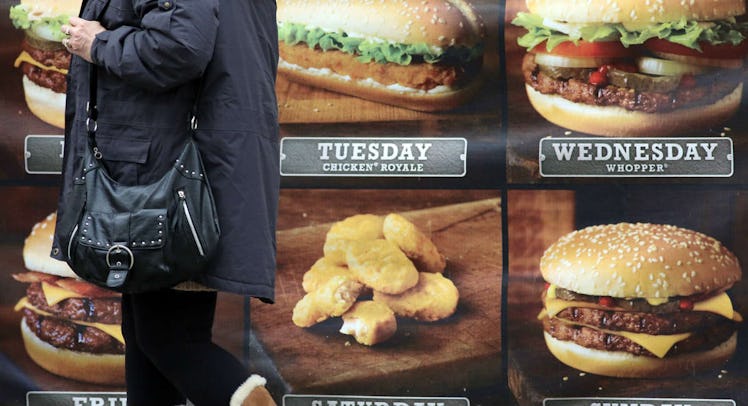New Study Finds That Sports Ads Are Filled with Unhealthy Junk Food
In a world full of ads, does it matter that junk food companies say they aren't targeting kids?

A new Pediatrics study published on Monday found that an overwhelming majority of food items displayed in sports sponsorships advertisements are unhealthy. The study also found that just more than half of the drinks in those same advertisements are sugar-enhanced.
The study aims to understand the link between unhealthy food and advertisements for sports sponsorships, as well as how those links could be having a bad influence on kids’ food choices.
To complete the study, researchers chose the “ten sports organizations with the most 2– 17-year-old viewers of 2015 televised events.” They then measured sponsorship by calculating the number of instances in which the organization’s name or logo appeared “in ads promoting food and/or non-alcoholic beverage sponsorships” from 2006 to 2016. Researchers then assessed the health quality of those foods and found that 76 percent of the food products shown in sports organization advertising are unhealthy, and that just over half of “nonalcoholic beverages were sugar-sweetened”
The team behind the study had a strict criteria for including an ad in its research: it had be something linking the sport to the product. For example, a company couldn’t just advertise their nachos during a football game; the advertisement would specifically have to link the NFL to the actual product. Though the team wants to understand how the prevalence of this unhealthy food will affect kids’ eating choices, Marie Bragg – the main author of the study and a professor in the Department of Population Health at the NYU School of Medicine – isn’t sure who exactly to blame.
“There’s a unique dynamic between the sports organizations and the food companies, and it’s hard to know who should take more responsibility for the problem or if both organizations — both sports organizations and food companies — should take equal responsibility,” Bragg said in an interview with Fox 2. “I’m not totally sure what the answer is.”
Hershey’s and Pepsi were two of the more famous brands named in the study. While both admit that they have released sports sponsorship advertisements in the past, each company had its own reason to believe that their ads weren’t potentially harming children.
In response to the study, Hershey noted that sports are intergenerational, but that everyone involved knows their “products are a treat.” Pepsi, on the other hand, avoided discussing whether or not their ads could have any effect on kids by bringing up its participation in the Children’s Food and Beverage Advertising Initiative, which makes it such that the company doesn’t advertise to kids under 12-years-old.
The study doesn’t actually determine how much influence the placement of certain sponsored advertisements has on children, nor does it quantify the presence of ads that don’t use moving pictures like billboards. Moreover, the target audience for sports is overwhelmingly made up of adults, not children. But for some professionals, that’s irrelevant.
“Food advertisers and athletic organizations have long had an unhealthy relationship, implying that if you’re physically active, you can eat anything you want,” said Dr. David Ludwig, an expert of children’s’ obesity prevention. “The evidence is that very few children are realistically ever going to reach such high activity levels that they can outrun a bad diet.”
Regardless of the target audience, the study found that the proximity kids have to the sponsored ads is still pretty staggering. The NFL has the most food and beverage sponsors, while also having the most youth viewership. Though the effects of the ads aren’t known just yet, one would assume that the executives find them affecting, at least enough to make them as prevalent as they are.
This article was originally published on